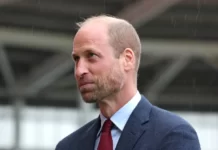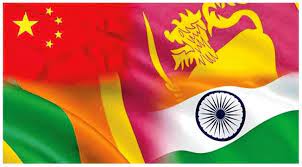In comparison to the robust relationship and legacy of intellectual, cultural, religious and linguistic interaction between India and Sri Lanka, in the recent past, their overall relations began to face rough weather and therefore, all is not well.
In January 2021, the killing of four Indian fishermen by the Sri Lankan naval forces, permission to a Chinese company to establish a hybrid energy project close to India, followed by the cancellation of the tripartite Memorandum of Understanding (MoU) between Sri-Lanka, India and Japan for the development of the East Container Terminal (ECT) at the Colombo Port in February 2021, compelled New Delhi to adopt a somewhat different line of interaction while dealing with its southern neighbour.
The recent behaviour of Sri Lanka is not in tune with a country like India with which Colombo had a relationship of over 2500 years, and in modern times they both have maintained good neighbourly relations after their independence from the closing years of the 1950s. They established their relationship at all levels and it was marked by trade and investment to progress of developmental assistance projects along with co-operation in the fields of infrastructure development, education, culture and defense
Even during the three-decade long years of conflict between the Sri Lankan government and the Liberation Tigers of Tamil Elam (LTTE), the Government of India supported the rights of the Sri Lankan government and favoured resolution of the struggle through talking and negotiations. However, the past closeness and understanding between the two underwent a drastic change from the regime of Mahinda Rajapaksa who became President of the country in November 2005. During the period of Rajapaksa, Sri Lanka preferred good relations with the People’s Republic of China and encouraged trade and other investments in the country. Again, in 2020, the Rajapaksa Brothers’ team returned to power in the island nation and several major investments projects have been signed with China, bypassing Indian relations and strategic interests.
In general, the majority of Sri Lankans view India favourably and India-Sri Lanka relations began on the basis of tthe millennia-old relationship between the two nations and later diversified and matured with the passage of time. Historically, both nations have shared a common culture, language, and religion and a maritime border separated by the Palk Strait. Following the years after independence the two countries resolved their citizenship issues by making several laws and arrangements at national level.
The pro-China policy of Sri Lanka continued till date except the time when in place of Rajapaksa, Maithripala Sirisena became the President of the country who tried his level best to maintain a balance in the country’s relations with both India and China between 2015 -2019. In particular, India has been worried due to the expansionist policy of China in the Indian Ocean as things are again going to shift in China’s favour with the return of Rajapaksa in 2019, posing more challenges for India and its regional and global politics as a whole
However, their relations began complicating since the 1970s with the rising incidents of Tamil citizens of Sri Lanka coming into competition with Sinhala people. The Tamil population of Sri Lanka have been deprived from equal rights as citizens of the country where Sinhalese are in majority. Almost all governments framed pro-Sinhalese policies which ultimately became violent and later transformed into the demand for a separate Tamil State called ‘Tamil Elam’ which lasted for about three decades until the death of LTTE leader Prabhakaran.
The understanding between the two deteriorated during the phase of civil war, although India was charged with fomenting terrorism in Sri Lanka, under the terms of the agreement signed with Rajiv Gandhi in 1987 New Delhi sent Indian Peace-keeping Force (IPKF). Apart from this, India provided valuable intelligence inputs to counter the LTTE and bring back peace in the country. After the war it also tried to settle the ethnic issue through peaceful dialogue and political dialogue.
Despite sympathy and co-operation on the part of the Indian government, the Sri-Lankan government, perhaps, keeping in view the strategic considerations, began to lean towards China and the latter took its maximum benefit owing to the geographical location of Sri-Lanka, which matters most for Beijing, and also to marginalise the importance of India in regional politics.
In addition, when the civil war and ethnic politics were at their height where Sri-Lanka’s security forces and LTTE were still fighting, China extended moral and material help to Sri Lanka along with defence equipment needed to defeat LTTE.
Although, diplomatic relations between the two had been established in 1957, they began warming and opened a new chapter when in November 2005 Mahinda Rajapaksa became the President of Sri Lanka and signed several agreements providing China a large scope for its investments in the country. In fact, Rajapaksa remained very influential in Sri Lankan politics in the last two decades beginning from the year 2002, but the most decisive period proved from November 2005 to 2015 when he was the President of Sri Lanka.
The phase between 2000-2010 witnessed a substantial inflow of Investments in Sri Lanka by the Chinese government and the first major project in this context was the Colombo National Performing Arts Theater. As in post-Cold War periods nations, in general, are looking for new foreign direct investment and Colombo allowed Chinese investments at large scale which, to a great extent, hampered Indian understandings and strategic relations with Sri Lanka.
India from the beginning and even in the period of Chinese investment in Sri Lanka continued to construct in the country several rehabilitation and developmental works, but the nature and type of Chinese investment affected Indian interests strategically.
The Chinese investment in the island nation’s projects were of two kinds: standalone projects and projects linked to the ambitious Chinese programme of the Belt and Road Initiative (BRI), whose projects are mainly related to construction of ports, airports, and power stations. Over the years, China and Sri Lanka established defence and strategic relations and consequently, China supplied a substantial range of modern armaments to the Sri Lankan armed forces and also they defended each other on the issue of violation of human rights in each other’s country at regional and global forums.
The pro-China policy of Sri Lanka continued till date except the time when in place of Rajapaksa, Maithripala Sirisena became the President of the country who tried his level best to maintain a balance in the country’s relations with both India and China between 2015 -2019. In particular, India has been worried due to the expansionist policy of China in the Indian Ocean as things are again going to shift in China’s favour with the return of Rajapaksa in 2019, posing more challenges for India and its regional and global politics as a whole.






















